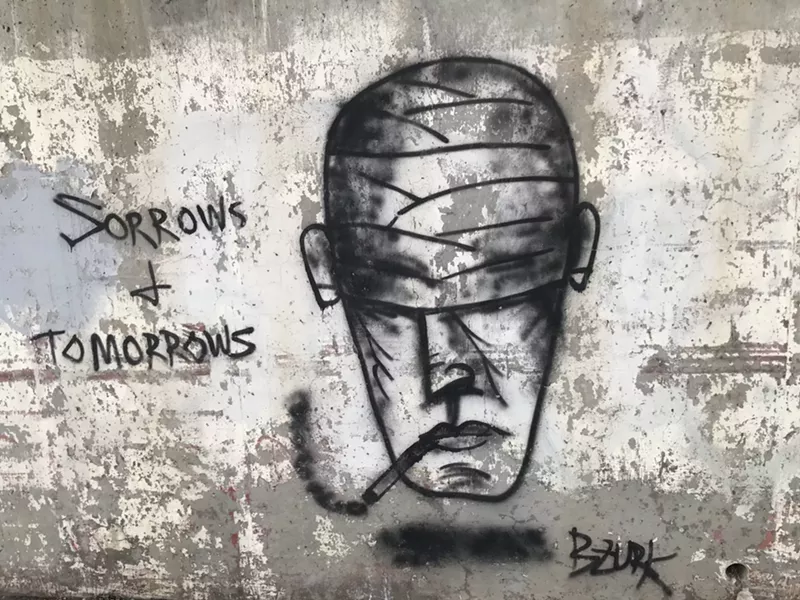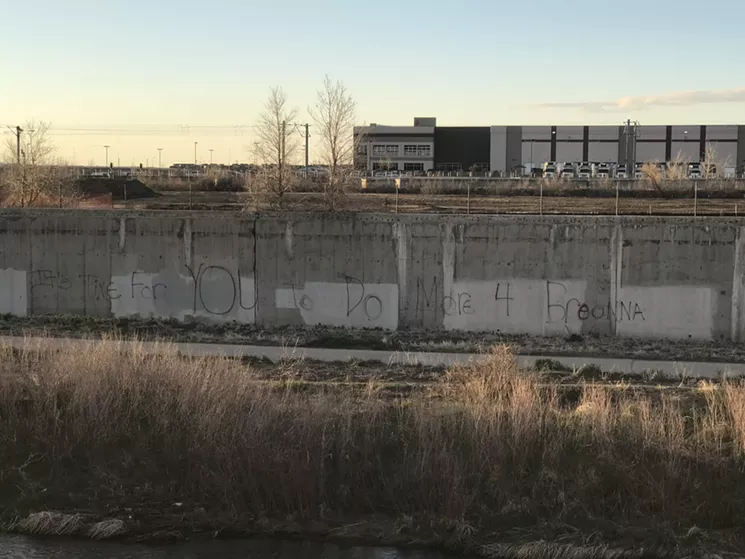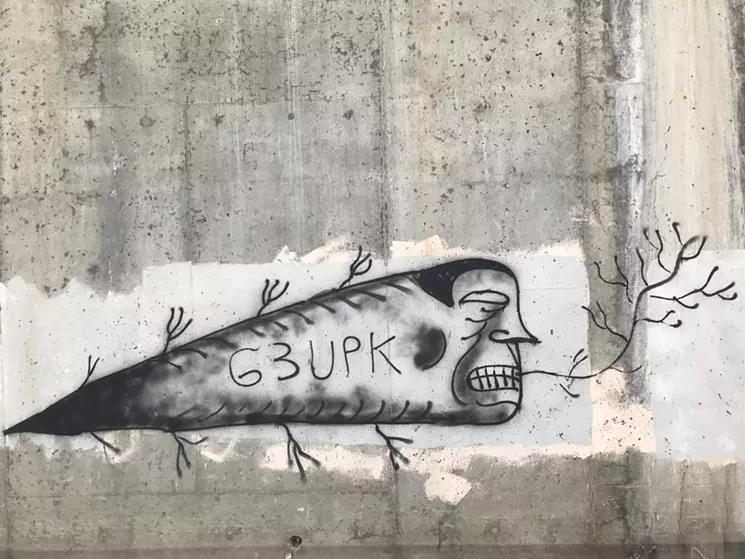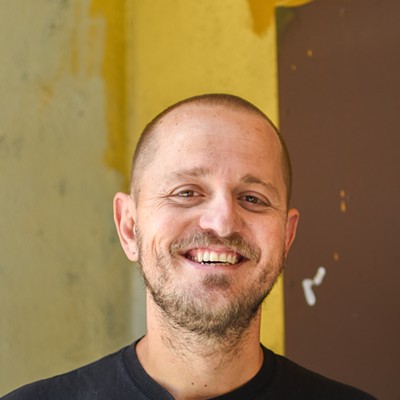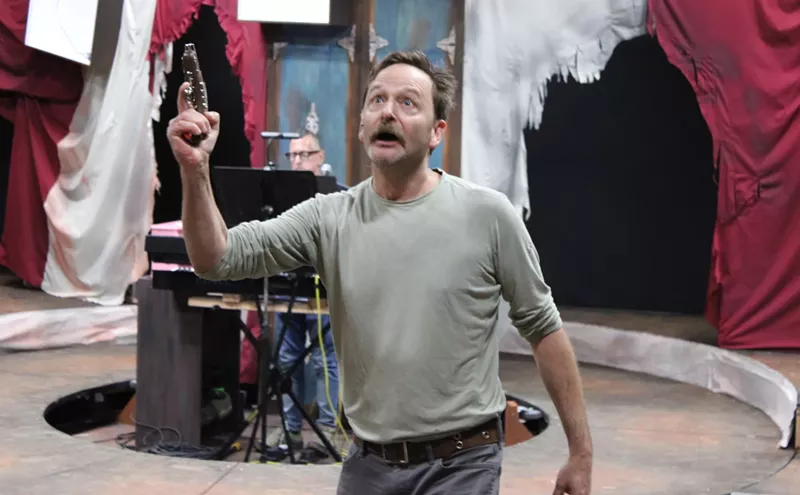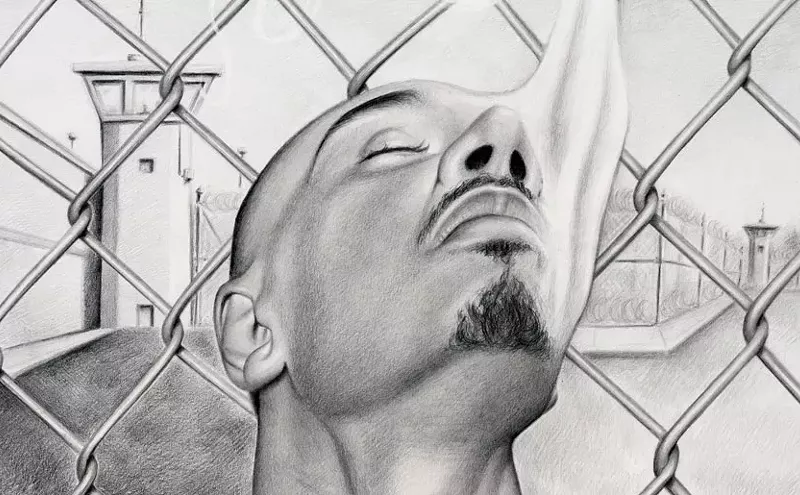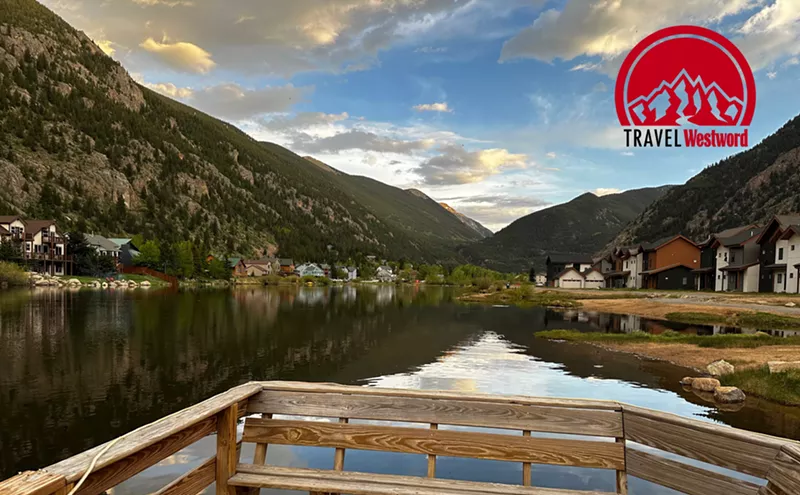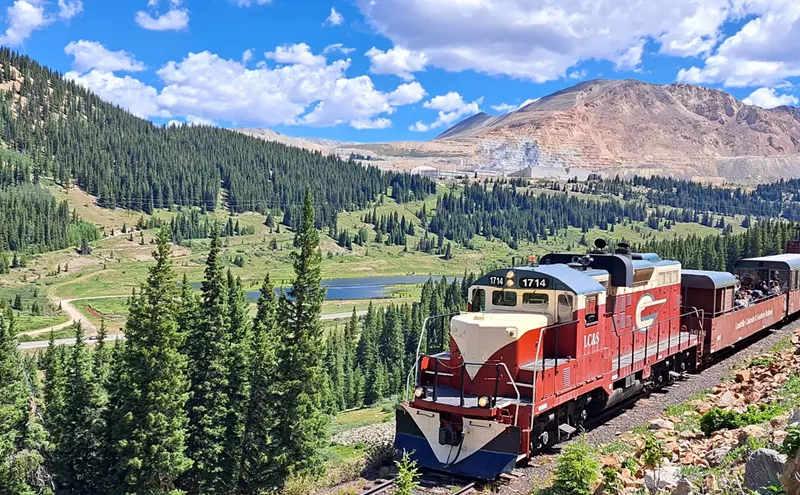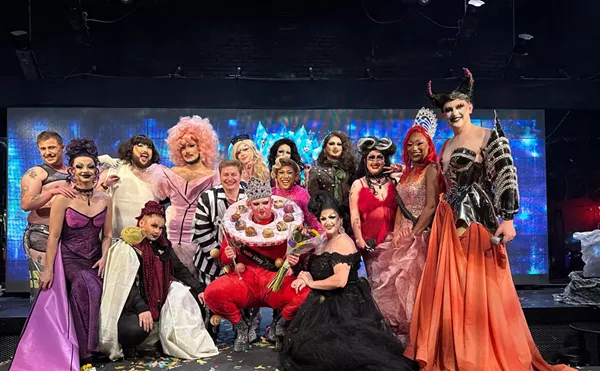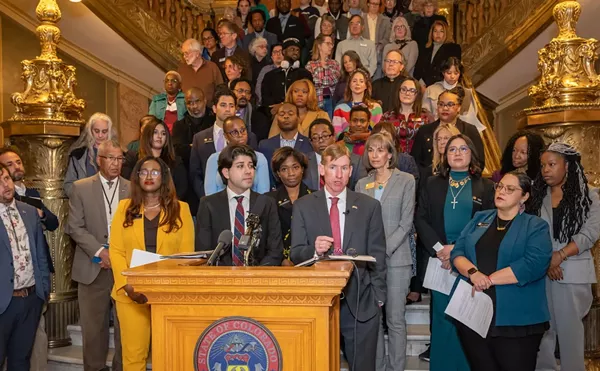Some works beg viewers to fight for justice or pay attention to nature; others express existential angst; one depicts a hooded bigot. Styles range from high art to the kind of dick doodles that enshrine truck-stop toilets.
The most troubling image is a crassly drawn Klansman under the seemingly nonsensical phrase "Kluchi Klux Klan." (Or is it a sloppily rendered "Kuchi Klux Klan?") For trail users, the drawing is a disturbing reminder of the white supremacy supporters who still exist in Denver. The piece is a threat, a hooded figure that reflects the lingering racist legacy of the neighborhood on the outskirts of which it was painted. Until last August, the twenty-year-old planned community had borrowed its moniker from the airport that once stood there — an airport named after Klan member Benjamin Stapleton, mayor of Denver from 1923 to 1931 and again from 1935 to 1947. After a vote, the area became Central Park.
As infuriating as it is to encounter Klan graffiti on a recreational run, it's no surprise that a vandal is evoking the memory of the KKK. This city has deep ties to that hate group that stretch far beyond the former mayor: History Colorado recently digitized two ledgers from 1924 to 1926 with 30,000 names of people in the state who had affiliations with the KKK. (If you had white family members in the area a century ago, you might want to check the public records).
Despite those racist roots, longstanding struggles for social justice are also part of this city's legacy.
Along the creek, there's a much larger piece pleading viewers to take action on behalf of Breonna Taylor, a 26-year-old Black medical worker who was shot and killed by police during a home raid gone awry in Louisville, Kentucky. Her death in March 2020 — along with those of George Floyd in Minneapolis and Elijah McClain in Aurora — helped fuel the international protests decrying police violence against African-Americans last summer.
This rushed graffiti states: "It's time for YOU to do more 4 Breonna," putting the responsibility of action on the viewer.
One of the more aesthetically interesting works, done in black and white, includes the image of a blindfolded man smoking a cigarette with a depressed look on his face next to the words "Sorrow and Tomorrow." Another standout, also black and white, shows what appears to be a carrot or a hill with branches coming out the sides and a face at the end with a dead tree growing from clenched teeth.
While one is neo-realist and the other surreal, both share moody shading techniques and a grim sensibility that seems to say: Life's bleak — carry on.
A jaw-dropping, colorful mural depicting flora and fauna from the region rises 13 feet high and stretches along 275 feet of the wall. This was the first commissioned mural on the trail, and was paid for by the Sand Creek Regional Partnership.

Yulia Avgustinovich's mural was the first to be commissioned by the Sand Creek Regional Partnership.
Kyle Harris
Underneath all the art and vandalism and even empty stretches of the wall are those mismatched rectangles of paint used to buff away markings in the ugliest, most bureaucratic way possible. The rectangles, a longstanding failed strategy in graffiti prevention that makes cities look worse than they did when they were tagged, inadvertently primes the walls for new artists and vandals to strike.
Which will be next: more murals or more graffiti?
If the Sand Creek Regional Partnership has its way and secures funding, there will be many more murals coming in the years ahead. And that's a good thing, both to support artists and to keep public walls from looking like bathroom stalls.

